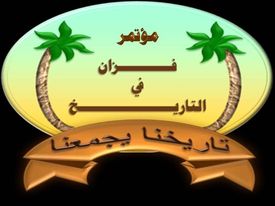Historical study of trade exchange between the Germans and the Three Cities during the Phoenician (Carthaginian) and Roman eras 500 B.C-235 AD
Main Article Content
Abstract
The Phoenicians knew the Libyan coast during the time they went and returned from the western Mediterranean for the purpose of trade and bringing the mineral materials required for their advanced industry and by passing by and mooring an it they knew the strategic importance of this coast, which represents the main gateway for goods because it is located at the shortest land roads leading south to south to south of the Libyan desert they decided to set up commercial stations on it to rest and to supply water and supplies from long trips and to obtain raw materials from areas beyond the desert that are required in the regions of the ancient world through the jeremiah tribe that interacted and dealt with them as the important criminal kingdom site had a major role in playing a role mediation in trade exchange between central Africa and the three cities since the Phoenician era which continued until it reached its climax in the Roman rea after the Romans controlled it the desire of this study was to compare trade exchange between the Germans and the three cities in the Phoenician and Roman eras, and the period of study extends from the year 500 B C to the year 235 A D, the end of the rule of the Severian, dynasty, This study aims to know the impor tance of the geographical location of the criminal kingdom and the three cities and its role in the success of the trade exchange between them, and to know the trade policy that the criminals followed with the Phoenicians, as well as the Romans, controlling thethe three cities, and what types of commercial good were exported and imported between the Phoenician era? Was there a change in the types of these exchanged commercial goods during the Roman era? And did the Romans continue to use the previous trade routes or did they establish new ways to reach the criminal kingdom? What are the most important means of transport afion used in the Roman era, and its impact on increasing commercial activity between the two parties highlighting the role of commercial activity in the economic and architectural development on both sides, and whether it had mutual effects on both parties? Whether during the period of their trade velations with the Phoenicians, or the Romans who controlled the three cities later.
Downloads
Article Details
Plagiarism policy
Sebha University Journal respects intellectual property and aims to protect the original work of authors applying for publication. In general, the laws of the magazine are inconsistent with scientific articles that contain stolen materials and are not bound by the standards of quality, research and innovation. Applicants for publication to the journal must adhere to ethical standards and refrain from plagiarism in any way. In the event that any plagiarism or scientific theft of an article submitted for publication is found, the journal will contact the author to provide their interpretation within two weeks of its date, after which it will be referred to the relevant committees formed for this purpose to take strict measures. about that. In general, the journal’s license allows the citation of the content published on its website and the download of all files.




